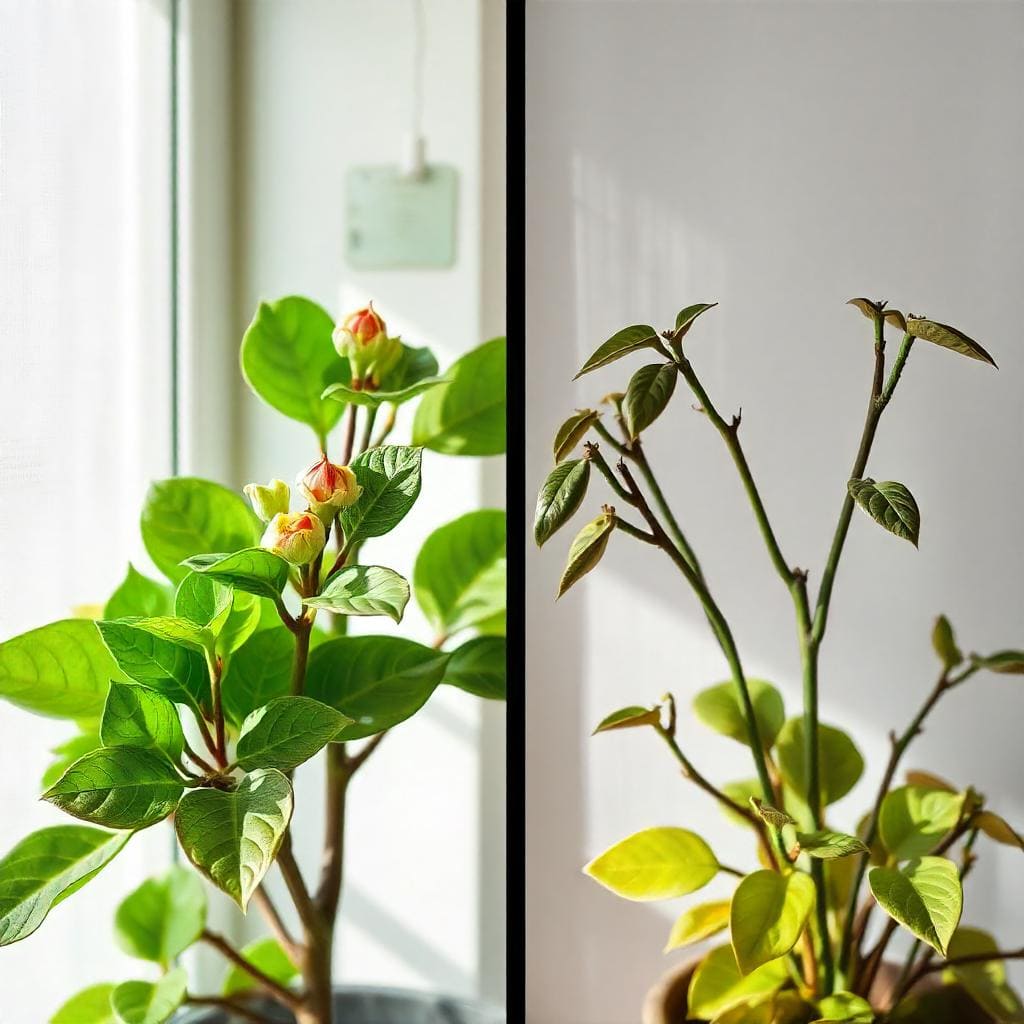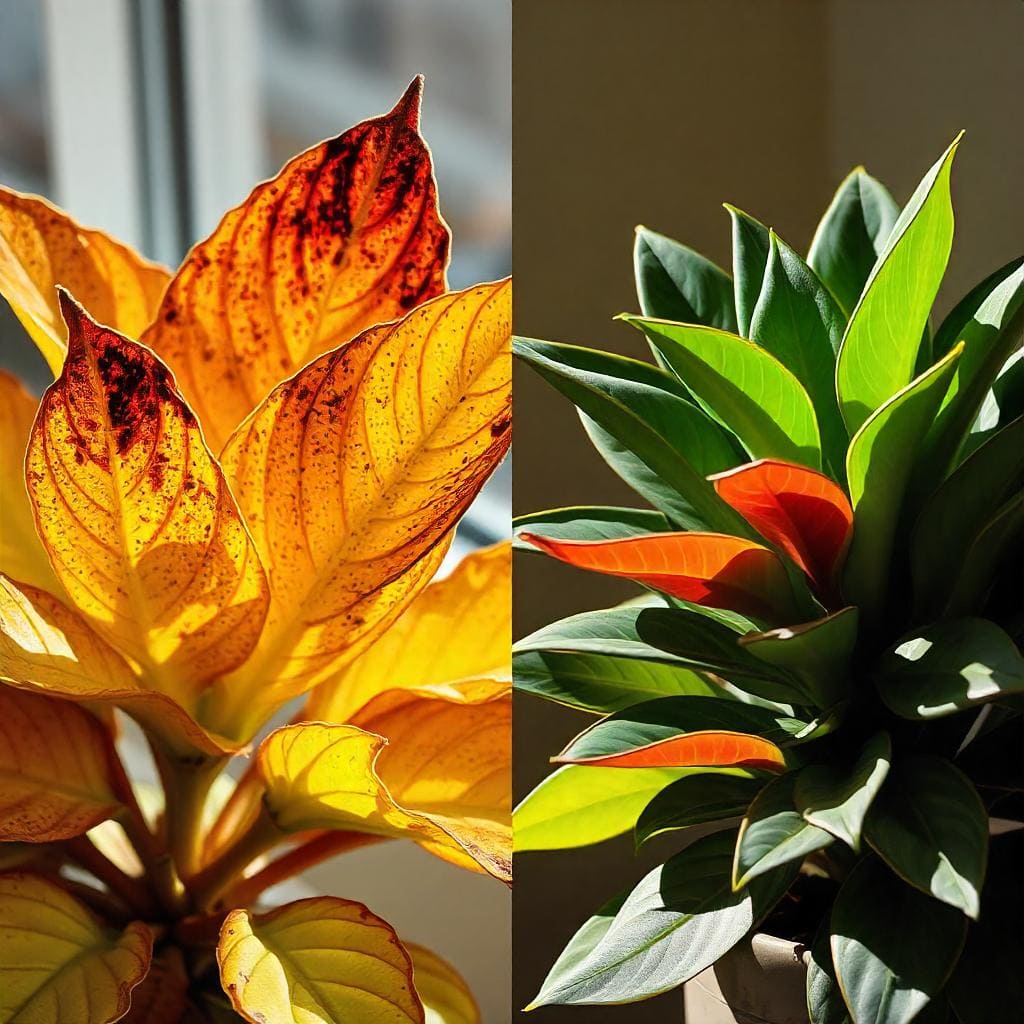Have you ever stared at your Hoya plant, wondering why it’s not blooming or worse, why its leaves look like they’ve been through a desert ordeal? I’ve been there, trust me. Hoyas, with their waxy leaves and stunning star-shaped flowers, are absolute gems, but they’re also a little picky about light. Get it wrong, and you’re left with a sad, leggy plant that refuses to show off. Get it right, though, and you’ll have a lush, thriving beauty that might just become the star of your home jungle. So, what’s the best light for Hoya plants? Let’s dive in and figure this out together because I’m as excited as you are to see those blooms pop!
The best light for Hoya plants is bright, indirect sunlight like what you’d get near a north or east-facing window. Too much direct sun fries them, too little leaves them stretching and sulking. Stick around, and I’ll walk you through everything you need to know to nail this, from placement tips to sneaky hacks I’ve picked up along the way.
Why Light Matters So Much for Your Hoya
Picture this: Hoyas grow naturally in tropical forests, dangling from trees where they soak up dappled sunlight filtered through the canopy. They’re not sunbathing on a beach or hiding in a cave they’re somewhere in between. That’s the vibe we’re aiming for at home. Light fuels their growth, keeps their leaves vibrant, and most importantly triggers those gorgeous blooms we all crave. Mess it up, and your Hoya might as well be auditioning for the role of “background plant nobody notices.”
I learned this the hard way. Years ago, I stuck my first Hoya carnosa in a dim corner, thinking, “Oh, it’s a houseplant, it’ll be fine.” Nope. It stretched out like it was reaching for the sun on tiptoes, and I didn’t see a single flower. Lesson learned: light is non-negotiable.
What’s the Best Light for Hoya Plants? The Straight Answer
Alright, let’s cut to the chase. The best light for Hoya plants is bright, indirect sunlight. Think of it as the Goldilocks zone—not too harsh, not too dim, just right. Here’s how that looks in real life:
- Ideal Setup: Place your Hoya near a north or east-facing window. These spots give you soft, consistent light without the scorching midday rays.
- Hours Needed: Aim for 6-8 hours of this gentle light daily. More is great if it’s filtered; less, and you’ll notice trouble brewing.
- Signs You’ve Nailed It: Glossy, green leaves, compact growth, and—if you’re lucky—clusters of flowers that smell like heaven.
But what if your windows face south or west? Or you live in a basement apartment with barely a sliver of natural light? Don’t worry—I’ve got solutions for that, too. Keep reading!
How to Spot If Your Hoya’s Light Is Off
Before we get into the nitty-gritty of fixing things, let’s talk about reading your plant’s signals. Hoyas are like moody artists—they’ll let you know when the lighting isn’t to their liking. Here’s what to watch for:
Too Much Light
- Burned or crispy leaves (think sunburn, but for plants).
- Yellowing or browning edges that scream, “Help, I’m frying!”
- Faded colors that make your Hoya look washed out.
I once left my Hoya kerrii in direct south-facing sun for a week during a heatwave. Big mistake. The leaves turned crunchy, and I felt like the worst plant parent ever. Lesson? Direct sun is a no-go for too long.
Too Little Light
- Leggy, stretched-out stems reaching desperately for more light.
- Pale or yellowish leaves that lack that rich green glow.
- No blooms or worse, no growth at all.
If your Hoya’s acting like it’s auditioning for a stretching contest, it’s begging for a brighter spot. Trust me, I’ve hauled mine across rooms to fix this exact problem.

How to Give Your Hoya the Perfect Light: Step-by-Step
Now that we know what Hoyas want, let’s make it happen. Whether you’re working with natural light or rigging up something artificial, here’s your game plan.
Step 1: Find the Right Window
- North-Facing: Perfect for steady, soft light all day. My Hoya carnosa lives here and hasn’t complained yet.
- East-Facing: Morning sun that’s gentle and kind—ideal for waking your plant up without overwhelming it.
- South or West-Facing: These can work, but pull your Hoya back a few feet or hang a sheer curtain. I use an old lace one I found at a thrift store—works like a charm and looks cute, too.
Step 2: Filter Harsh Rays
Direct sunlight, especially in summer, is like putting your Hoya in a microwave. Diffuse it with:
- Sheer Curtains: Cheap, easy, and stylish.
- Blinds: Adjust them to let in just enough light.
- Frosted Window Film: A DIY fix if you’re renting and can’t hang curtains.
Step 3: Boost Light with Grow Lights (If Needed)
No sunny windows? No problem. Grow lights are a lifesaver—I’ve used them in my dimly lit office to keep my Hoyas happy. Here’s the scoop:
- Type: Full-spectrum LED grow lights mimic sunlight best.
- Distance: Keep them 12-18 inches above your plant.
- Timing: 10-12 hours a day mimics a natural cycle. Set a timer so you don’t forget (I’ve totally spaced on this before!).
Step 4: Rotate Regularly
Ever notice one side of your Hoya growing faster? That’s it chasing the light. Give it a quarter turn every week or two. It’s a small thing, but it keeps growth even and balanced.
Step 5: Watch and Adjust
Plants don’t come with instruction manuals (well, except this one!), so keep an eye out. If leaves look healthy and growth is steady, you’re golden. If not, tweak the setup. It’s all about trial and error—and a little love.
Hoya Light Hacks You Won’t Find Everywhere
Alright, here’s where I spill some of my favorite tricks. These are the little secrets that took my Hoya game from “meh” to “whoa.”
- Mirror Magic: Place a small mirror behind your Hoya to bounce light back onto it. I’ve got a cheap one propped up near mine, and it’s like doubling the sunshine for free.
- Trellis Trick: Train your Hoya to climb a hoop or trellis near a window. More leaves catch the light, and it looks gorgeous—like living art.
- Fluorescent Fix: Out of grow light budget? A cool-white fluorescent bulb works in a pinch. I’ve used one over a bookshelf Hoya, and it held its own.
- Seasonal Shuffle: Move your Hoya closer to the window in winter when light’s weaker, then back in summer. It’s like giving it a seasonal vacation.

Common Hoya Light Mistakes (And How to Fix Them)
Even I’ve tripped over these at some point. Here’s what to avoid—and how to bounce back if you’ve already goofed.
Mistake #1: Thinking Hoyas Are Low-Light Plants
They’re not cacti or snake plants. Dim corners won’t cut it.
Fix: Move it to a brighter spot ASAP. You’ll see it perk up within days.
Mistake #2: Blasting Them with Direct Sun
That south-facing window without a filter? Ouch.
Fix: Add a sheer curtain or shift it back a few feet. Burned leaves won’t heal, but new ones will grow fine.
Mistake #3: Ignoring Seasonal Changes
Winter light is weaker, summer’s brutal.
Fix: Adjust placement with the seasons—closer in winter, farther in summer. It’s a dance worth learning.
Do Different Hoyas Need Different Light?
Mostly, no they all love bright, indirect light. But some varieties have quirks:
- Hoya diversifolia: Grows near beaches in the wild, so it can handle a bit more intensity. Mine sits closer to the window than others.
- Hoya carnosa compacta (Hindu Rope): Those twisted leaves need good light to stay tight and bloom. Skimp, and it’ll stretch out.
- Hoya kerrii: The heart-leaf cutie likes moderate brightness—nothing too extreme.
Not sure what you’ve got? Check the leaves and growth habits, or snap a pic for a plant ID app. Either way, start with bright, indirect light and tweak from there.
Wrapping It Up: Light Your Hoya’s Way to Glory
So, there you have it the best light for Hoya plants is bright, indirect sunlight, delivered with a bit of care and creativity. Whether it’s a north-facing window, a filtered south one, or a trusty grow light, you’ve got the tools to make your Hoya thrive. I’ve fumbled my way through crispy leaves and leggy stems to figure this out, and now you don’t have to. Watch your plant, tweak as needed, and soon you’ll be showing off those blooms like a proud plant parent. Got a Hoya lighting tip of your own? I’d love to hear it—because honestly, we’re all in this green adventure together!
FAQ: Your Hoya Light Questions, Answered
A little morning or evening sun? Sure, some tougher varieties might take it. Midday? Nope think leaf barbecue. Watch for scorching and adjust.
Light’s often the culprit. Too little, and it won’t flower. Bump up the brightness (indirect, of course), and be patient—blooms take time.
Healthy leaves green, glossy, not burned or pale and steady growth are your clues. Flowers are the bonus prize!
Absolutely, especially in low-light homes. They’ve saved my Hoyas in winter, and the setup’s easier than you’d think.
Yes! It keeps growth even and stops that lopsided “reaching for the sun” look. Every couple of weeks does the trick.

